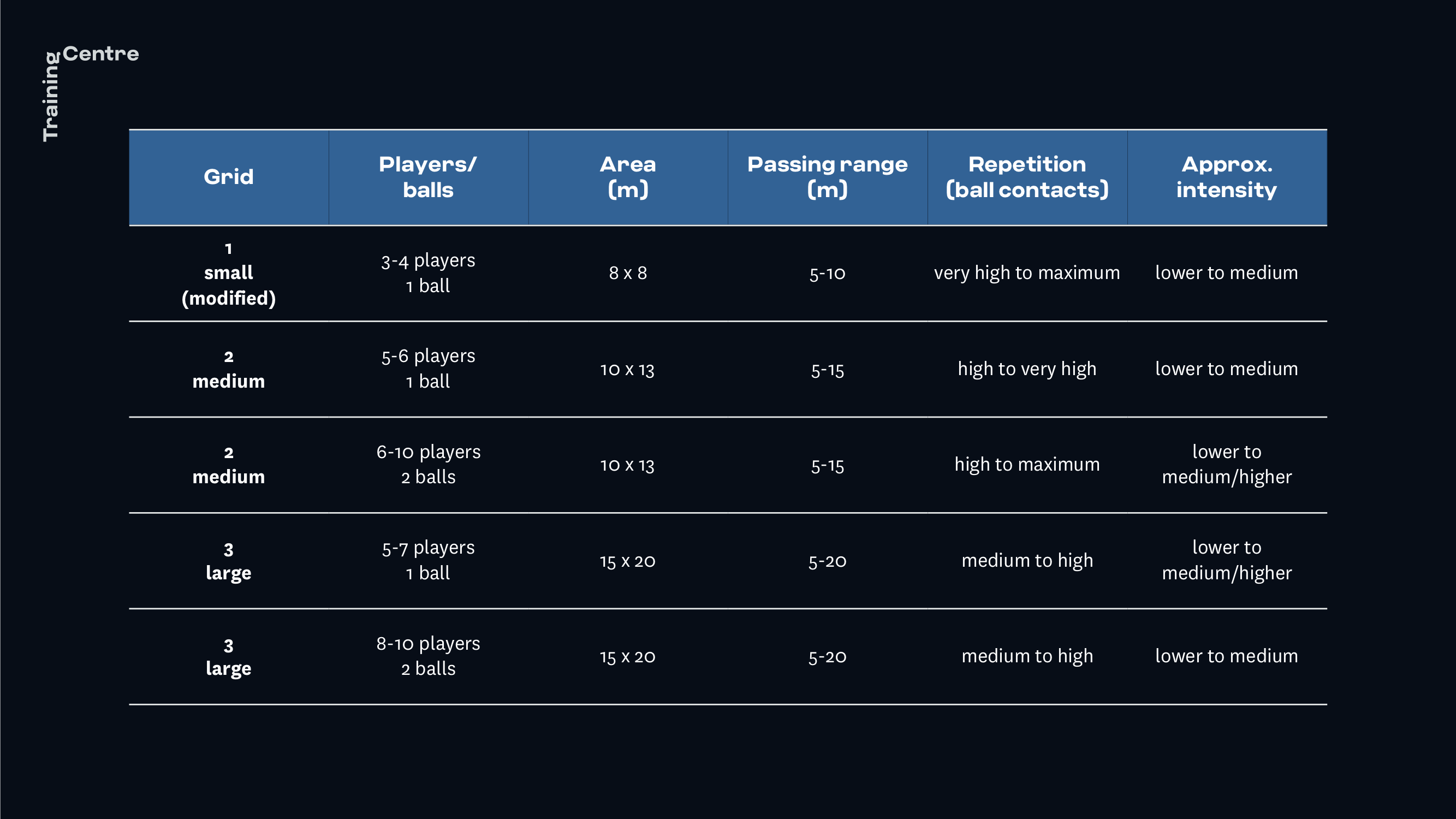Circuits will be added to this overview whenever an article on an additional circuit is being released on the FIFA Training Centre.
Together, the circuits incorporate the rationale, principles and qualities highlighted in the introduction article to technical activation, while individually, each circuit places a varying degree of emphasis on specific target areas. For example, circuit 2 can be set up to target quick-feet agility and movement fluency in tight spaces with a high-load repetition of ball contact. In contrast, circuit 3 places a greater emphasis on collective cohesion over longer passing ranges between two, three or even four players in unison, working on timing runs and passing quality for a variety of offensive and penetrating or build-up passing patterns.
Although there is some overlap among the circuits as certain drills are seen in more than one of them, there are notable variations, such as different passing distances that change the focus of the drill. There is a range of grid dimensions for nearly all circuits, which enables a level of flexibility within each one, i.e. grids for tight spaces and low player numbers with more emphasis on individual technical qualities to those with a bigger area requiring greater technical cohesion between players, namely, movement and passing qualities over greater distances.
Collectively, the six technical activation circuits provide coaches with a variety of options to cover all training requirements and target individual and collective techniques as well as movement patterns, while catering to all possible ranges of player numbers.

Key organisational objectives
- To provide training capacity for at least 20 players (all circuits) and a minimum of three to four players (circuits 1, 2, 4 and 6).
- The majority of circuits are set up with a four-corner external perimeter (see circuit diagrams) that enables all conceivable movement and passing patterns to be implemented within them. Together with the inherent nature of most drills in the circuit set-ups to enable full left- and right-side rotation of the ball simultaneously, we have a very efficient training methodology of high repetition with a balanced and comprehensive movement repertoire.
- The grids (mannequin set-ups) are hubs or fulcrum points of technical interaction, the focus areas for movement and passing sequences between players. For most circuits, there are a number of grid options available (1, 2 and 3), which mostly relate to grid size (small/medium/large). This allows a greater variety of individual drills and also provides the flexibility to work in both tight and open spaces and with short to longer passing ranges.
- The drills provide variety in terms of movement repertoire combined with an incentive to target, develop, reinforce or enhance specific technical qualities and efficiency in a training environment.
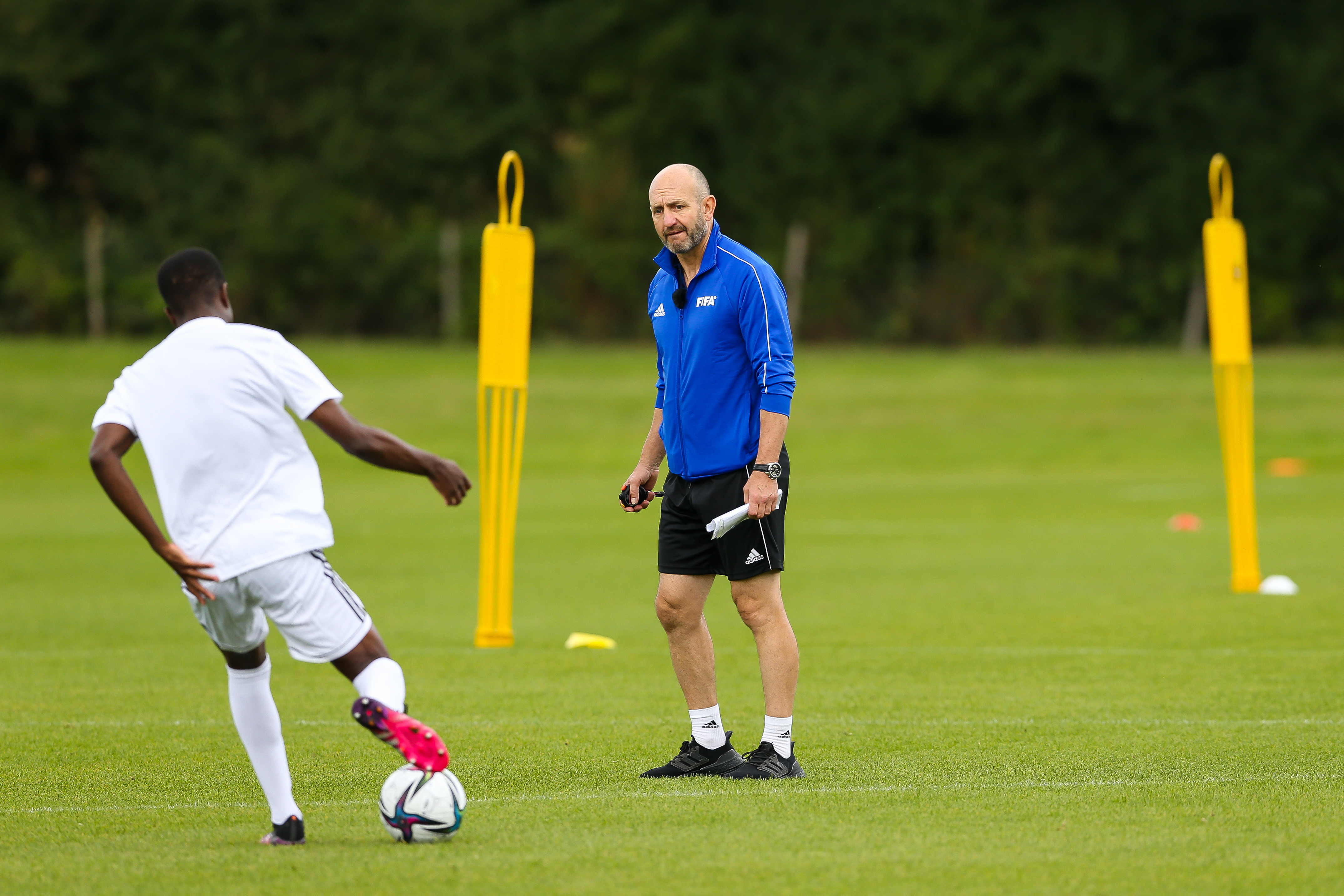
When to implement?
- Technical warm-up protocol.
- Active recovery session – used as an efficient technical protocol implemented in recovery day sessions after matches or after highly intensive training sessions.
- As a technical development programme for youth players.
- Non-contact session (off-setting player contact loading and recovery from the stressors of the physical challenge).
- Small groups of players, i.e. subs post-match training, technical preparation for injured players returning to full training.
Technical activation circuit 1
.jpg)
Focus of the circuit
Quick feet, timing of movement and technical coordination in a tight space with maximum ball contact for individual players and cohesion between players (grid 1). Increased emphasis on technical cohesion between units of players in passing ranges of up to 15 metres (grid 2). Maximum emphasis on technical cohesion between units of players (timing of movement and passing quality) in passing ranges of up to 25 metres (grid 3).
(Follow this link to the article on circuit 1)
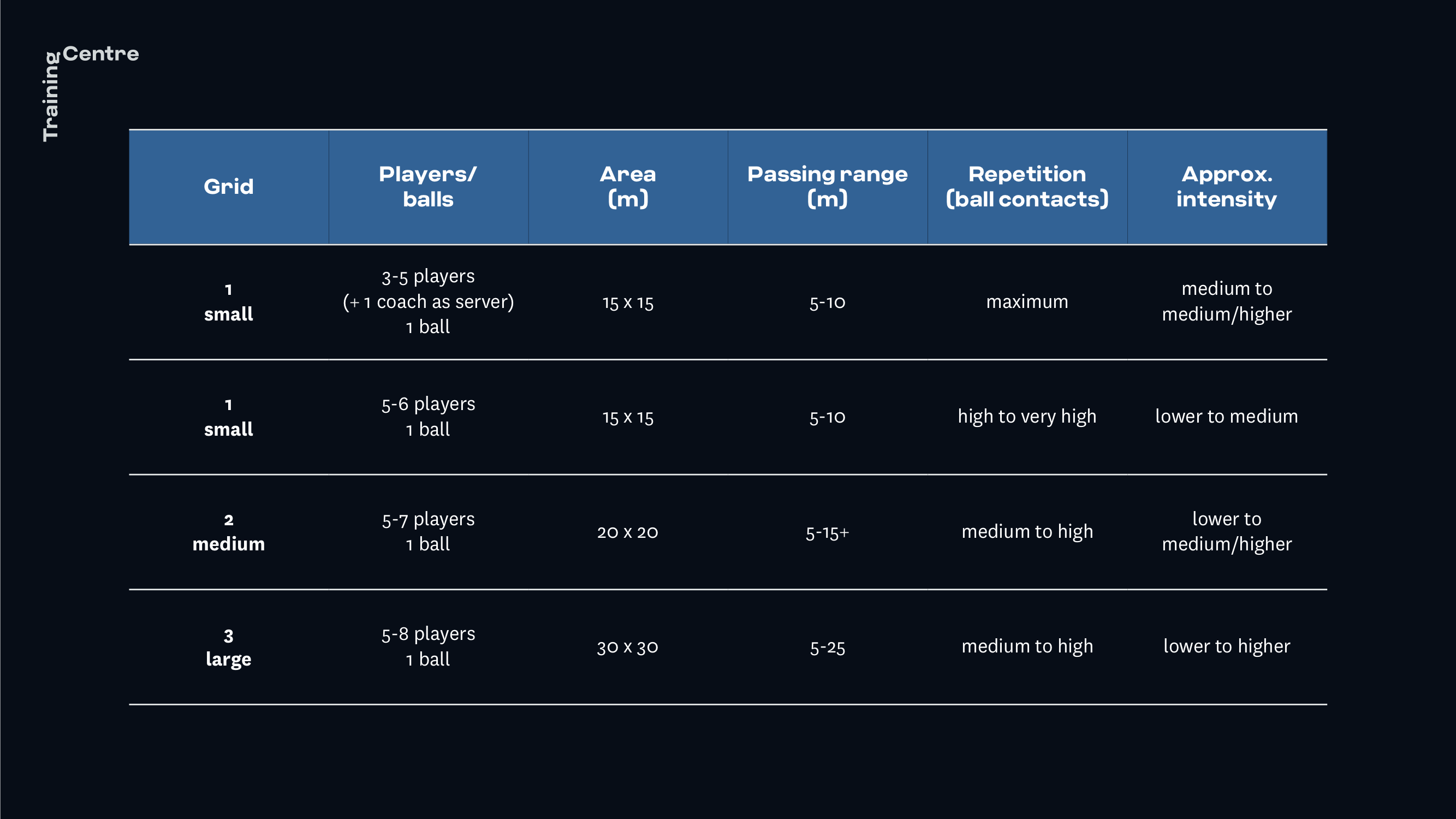
Technical activation circuit 2
.jpg)
Focus of the circuit
Quick feet, timing of movement and technical coordination in a tight space for cohesion between players as well as significant emphasis on individual players. Very high repetition of ball contacts per unit of time (grid 1). Greater emphasis on close control and agility of footwork, with more complex movement combinations in some of the individual drills in the circuit (grid 1 modified).
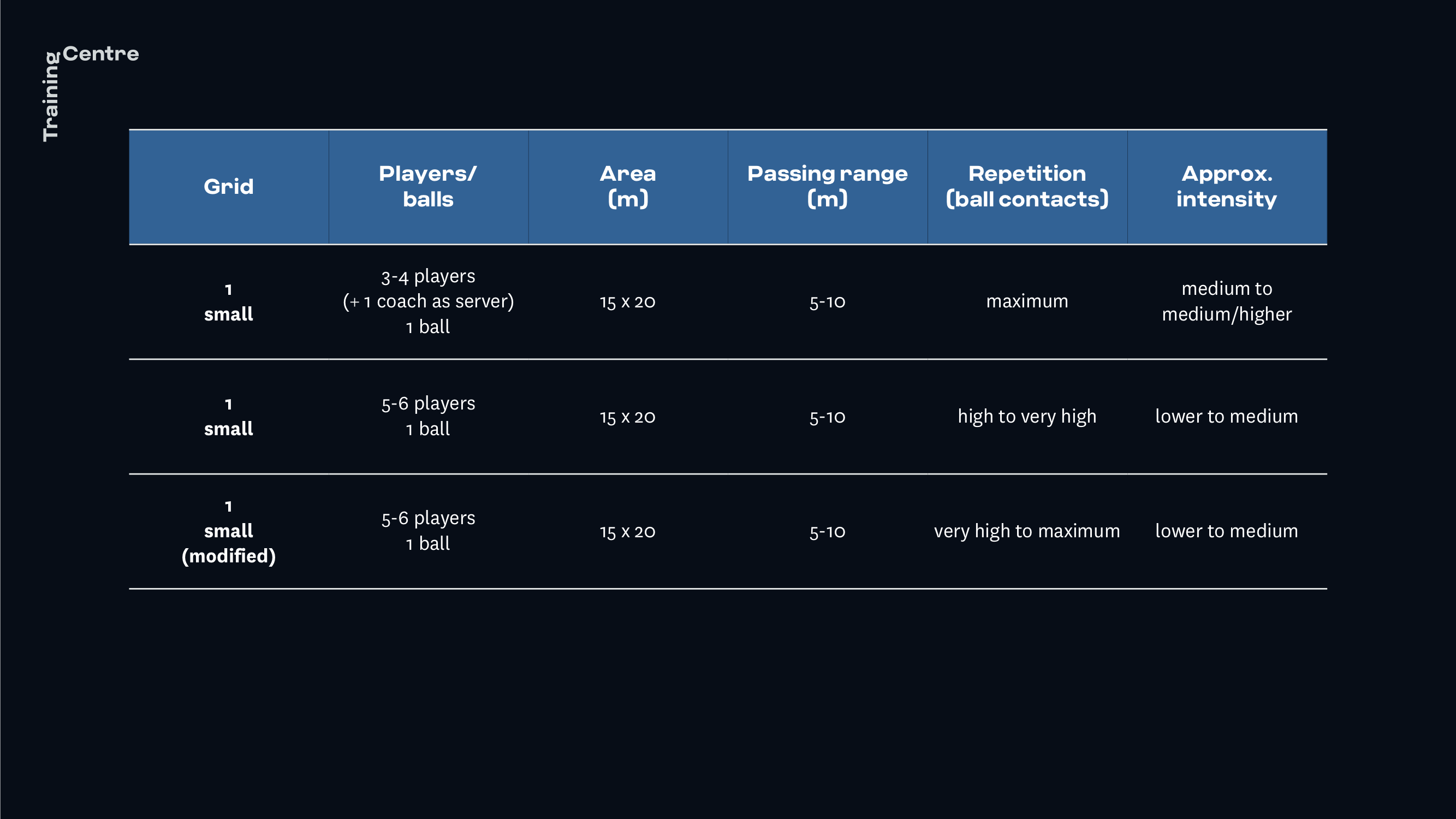
Technical activation circuit 3
.jpg)
Focus of the circuit
The biggest of all the circuits offers great training flexibility, with a range of drills from seven players with one ball in rotation to 14 players with two balls rotating. There is great variety of movement and passing combinations in units of three to four players, with a real focus on technical cohesion between players during passing, moving and timing of acceleration seen in passing distances of up to 30 metres.
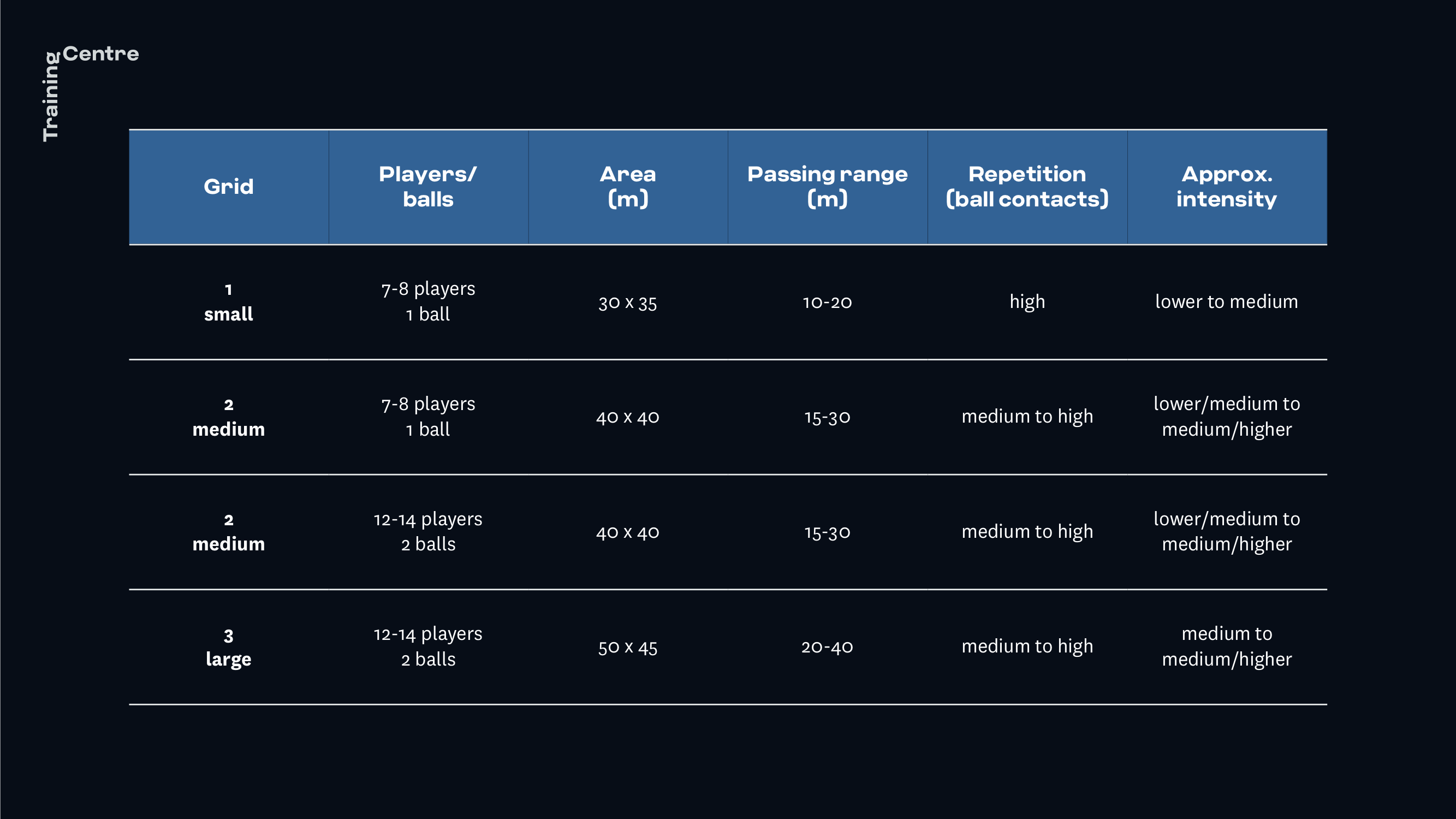
Technical activation circuit 4
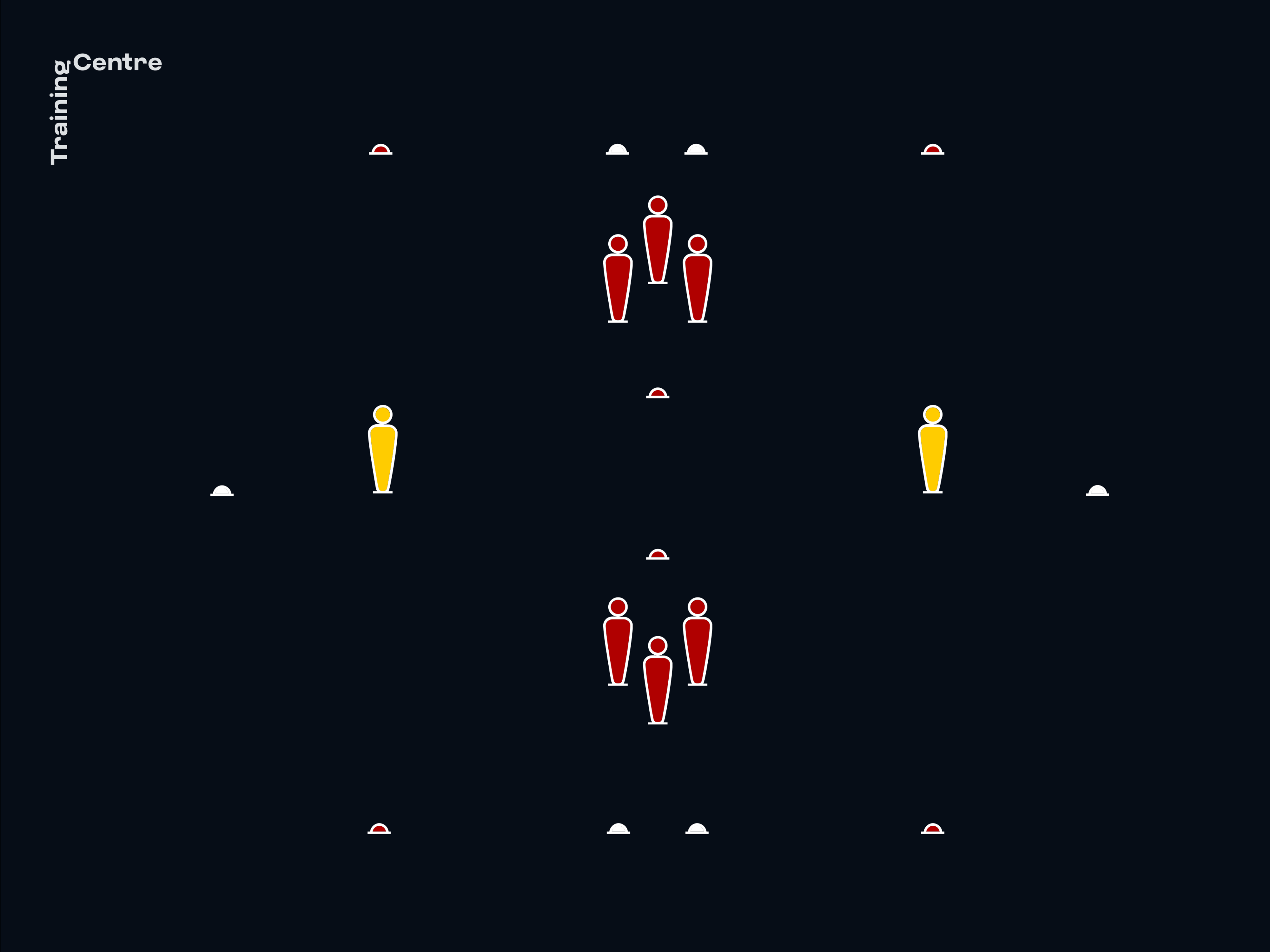
Focus of the circuit
Circuit 4 offers great training flexibility, with a range of drills from three players (one ball) right up to 14 players (with two balls). Also, within each circuit grid 2 and 3, there is a great variety of movement and emphasis on technique, with drills involving very high ball-contact repetitions for quick-feet technical coordination in tight spaces and technical cohesion between players as well as greater acceleration of movement in passing ranges of ten to 30 metres.
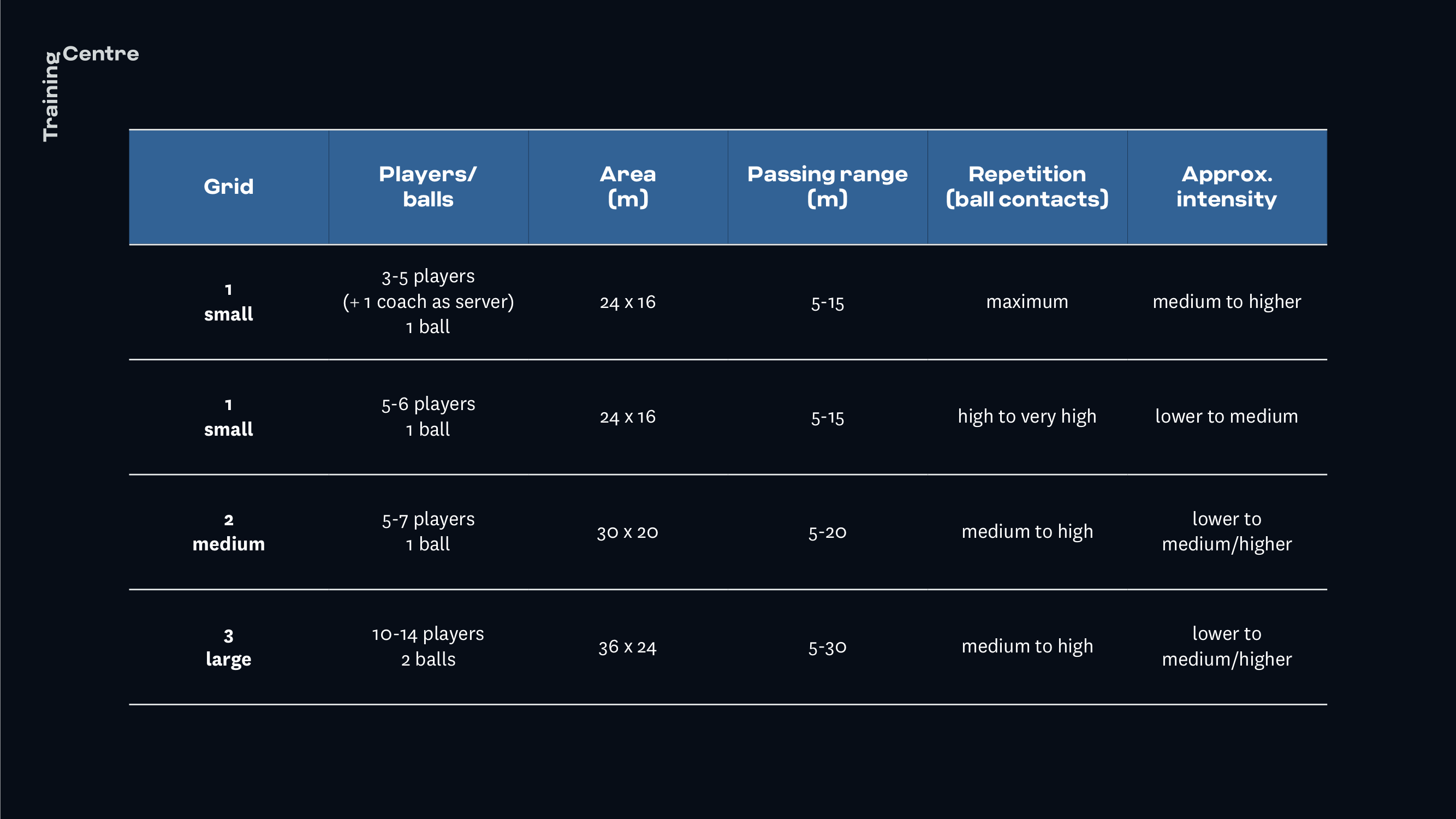
Technical activation circuit 5

Focus of the circuit
Circuit 5 focuses on quick feet, timing of movement and technical coordination skills when players operate in tight spaces and relates to both individual players and the collective cohesion between them. The drills place greater emphasis on the individual player and specifically concentrate on playing forward quickly in various scenarios.
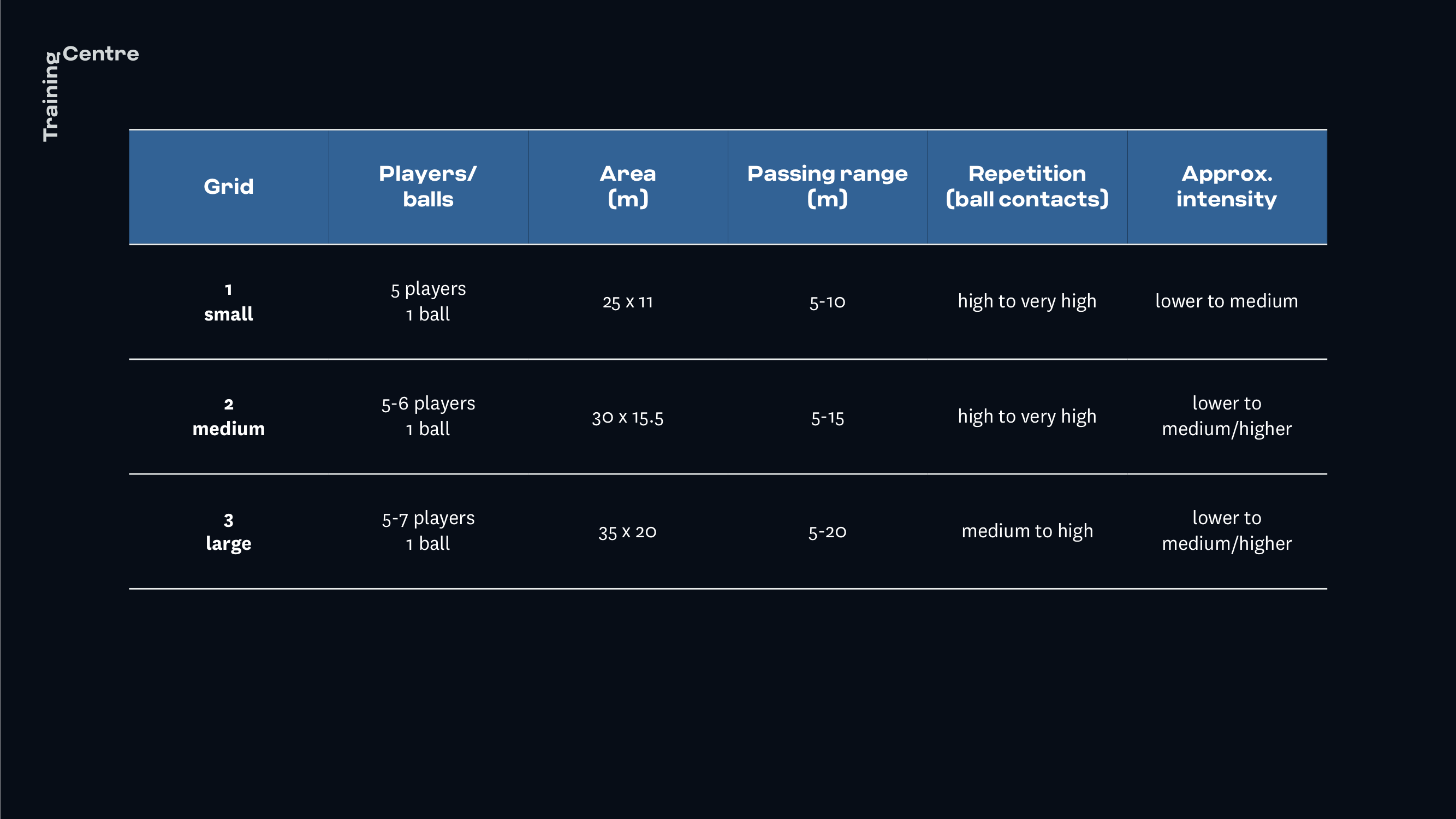
Technical activation circuit 6
Focus of the circuit
Circuit 6 is the most straightforward of all of the circuits and requires the least amount of space for the playing area. It represents a highly flexible and efficient technical warm-up and development circuit. The emphasis in many of the drills developed for this circuit is on the individual player, with the exercises aimed at developing technical coordination in tight spaces. The focus is on combining fast footwork with the technical balance required to play left- and right- footed passes within individual technical movement sequences.
